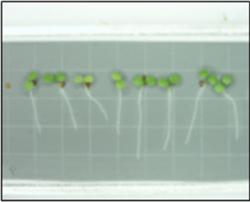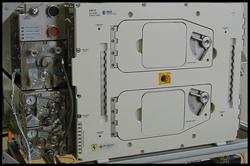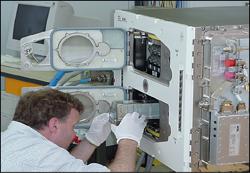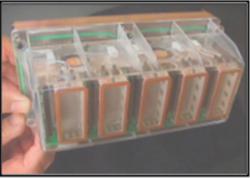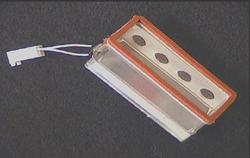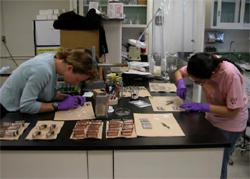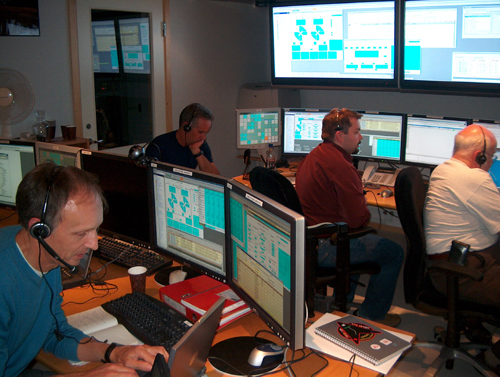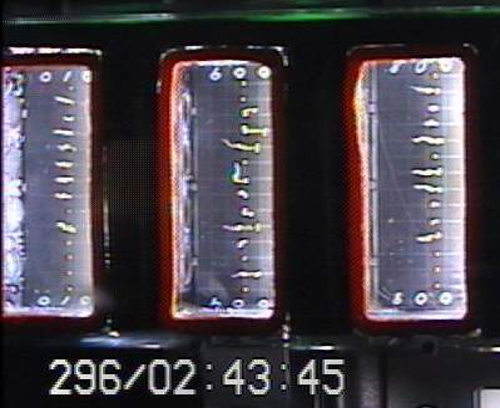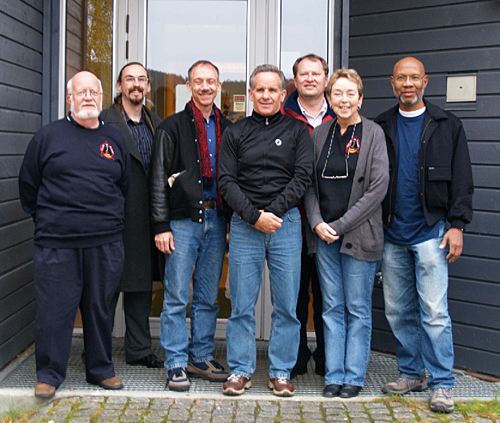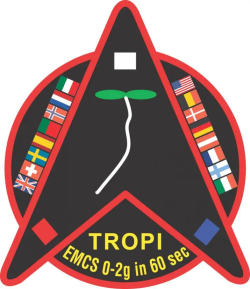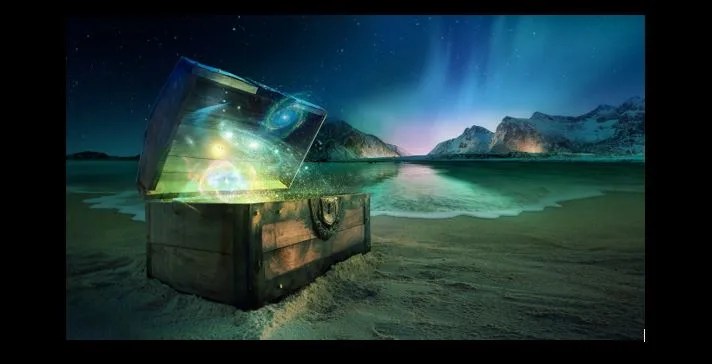TROPI (STS-121)
Analysis of a Novel Sensory Mechanism in Root Phototropism
Overview
The major goals of this research are to better understand cellular mechanisms of phototropism in plants and to determine the effects of gravity on light perception in plants. Specifically, microgravity is used to study phototropism in roots and hypocotyls of Arabidopsis seedlings. Ground-based studies suggest that there are two photosensory systems that elicit phototropic responses in roots: a previously identified blue-light system and a red-light phytochrome-based mechanism that was recently discovered by principal investigator John Kiss’s team. The phototropic response in roots is much weaker than the graviresponse, which competes with and often masks the phototropic response. It was through the use of mutant plants with weakened gravitropism that the red-light-dependent phototropic system was identified. Because of the interfering effect of the gravitropic response in roots, microgravity is needed to study this novel red-light-dependent phototropic response.
The experiments provide a detailed characterization of root phototropism, provide insight into how red light enhances blue-light dependent phototropism, and provide a better understanding of how plants integrate sensory input from multiple light and gravity perception systems. These experiments are ideal for the early utilization phase of the International Space Station since the procedures are simple yet the potential for significant scientific return is high.
The predominant data gathered in the experiment are images obtained from video recordings. The remainder of the data comes from returned frozen specimens studied with microarray analysis. The experiment has three separate runs.
This research provides a better understanding of how plants integrate sensory input from multiple light and gravity perception systems at a continuum of gravity levels. This information is important for growing plants on long-term space missions as part of life support systems. The fractional gravity studies in for this experiment contain 0.16 g (moon) and 0.38 g (Mars) levels.
Space Station Facility
The European Modular Cultivation System (EMCS) along with Ames-built experiment unique hardware supported this experiment.
The EMCS Facility was developed by the European Space Agency (ESA). It was transported to the space station on the space shuttle in 2006 and is currently located in the ESA Columbus Module. The EMCS is an automated growth chamber/incubator which controls atmospheric composition, temperature, humidity, illumination and water delivery. The EMCS has two centrifuge rotors, each of which holds four experiment containers. The experiment containers were built by ESA and provide the support structure for experiment specific hardware. The rotors can be operated at various speeds to produce gravity levels ranging from 0 to 2.0 g.
Ames Research Center-built Hardware
Ames designed, developed and manufactured the experiment unique equipment for the TROPI experiment that fits inside the ESA experiment containers. The experiment unique equipment consists of a support structure holding fans, electrical boards and Teflon bellows containing sterile water for hydration of the seeds.
In addition, the experiment unique equipment contains seed cassettes with nutrient-saturated filter paper, seeds, gas permeable membranes, Light Emitting Diodes (LEDs), and lexan covers with heaters. The LEDs provide experiment specific lighting and the heaters on the covers prevent condensation so that photographic images of seed growth can be obtained.
Experiment Operations Overview
Flight hardware assemblies (experiment containers and experiment unique equipment) were built at Ames. They were loaded with seeds under sterile conditions.
The experiment containers/experiment unique equipment assembly was transported to Kennedy Space Center for turnover and installation into the Space Shuttle Middeck. Upon arrival at the space station, the ECs were placed in ambient stowage by station crew. At the start of each experiment run, station crew loaded the experiment containers into the EMCS. The seeds were hydrated and grown at 1 g to establish a known gravitropic axis, followed by altered gravity exposure (1 g, µ g, 0.2 g or 0.5 g.) The seedlings were treated with blue or red light to test the interaction of light and gravity on hypocotyl and root curvature.
Video images of the seedlings were captured during the experiment. Following the completion of each experiment run, the experiment containers were removed from the EMCS. The seed cassettes were removed from the experiment containers and placed into the – 80-degree freezer for storage. The frozen samples were returned to Earth in cold stowage aboard the space shuttle.
Experiment Timeline
Growth Phase
Day 1 Transfer ECs to EMCS; hydrate; centrifuge at 1 g with growth illumination
Day 2 Continue
Day 3 Continue, image capture
Stimulation Phase
Day 4 Alter g-level; start stimulation illumination; image capture
Day 5 Remove experiment containers, freeze seed cassettes at -80°C temperature
Launch/Return Timeline:
TROPI Launch
STS-121 July 4, 2006 (8 experiment containers)
STS-115 September 9, 2006 (16 experiment containers)
TROPI Recovery
STS-116 December 2006 (40 cassettes) landed at Kennedy Space Center
STS-117 June 2007 (70 cassettes) landed at Edwards Air Force Base
STS-120 November, 2007 (10 cassettes) landed at Kennedy Space Center
Experiment Results
Imaging: Analysis of root and shoot responses to different light regimes at different g-levels is ongoing.
RNA: Preliminary analysis of the TROPI samples returned on STS-116 in December 2006 resulted in little or no yield of total RNA. However, samples returned on STS-117 in June 2007 resulted in good quality RNA. For the samples returned on STS-117, a three-minute requirement was established: the seedlings in the TROPI cassettes must be transferred from the space station freezer to the JSC cold bag within three minutes on the station. This new requirement resulted in expedited cold transfer operations and successful yield of RNA.
The results from the analysis, thus far, show that genes in plant hormone pathways are affected by microgravity: auxin, cytokinin, ethylene, and brassiosteriods.. In addition, genes in important developmental pathways are affected by microgravity: photo-perception, heat shock, plastid development, root hairs, among others. The down-regulated genes (long vs. short exposure to microgravity) can be representatives of early-inducible genes in gravity-related pathways in plants (Kiss, et al, unpublished data).
For more information, see the Space Station Research Explorer for the TROPI mission.
On-orbit Experiment Problem
Video data collection was compromised due to software problems and neither video nor RNA data from fractional g levels were obtained. The re-flight of the TROPI experiment (TROPI2) will provide an opportunity to collect video and RNA data from two experiment runs at four g levels, specifically the fractional g levels missed in this original experiment. The TROPI2 experiment is scheduled to be launched on STS-130 (20A) and operate during Increment 22-23 and return on STS-131(19A).
Payload Developer: NASA Ames Research Center
Payload Team
Principal Investigator – Dr. John Kiss, Miami University, Oxford, Ohio
Project Manager – Dr. Michael Eodice, NASA Ames Research Center
Deputy Project Manager – Dr. Marianne Steele, Lockheed Martin, NASA Ames Research Center
Project Scientist – Dr. Robert Bowman, Lockheed Martin, NASA Ames Research Center
Project Engineer – Ed Houston, Howard & Houston, NASA Ames Research Center
Ops Lead – Dr. David Heathcote, Lockheed Martin, NASA Ames Research Center
QA – Robert Burney, NASA Ames Research Center

























